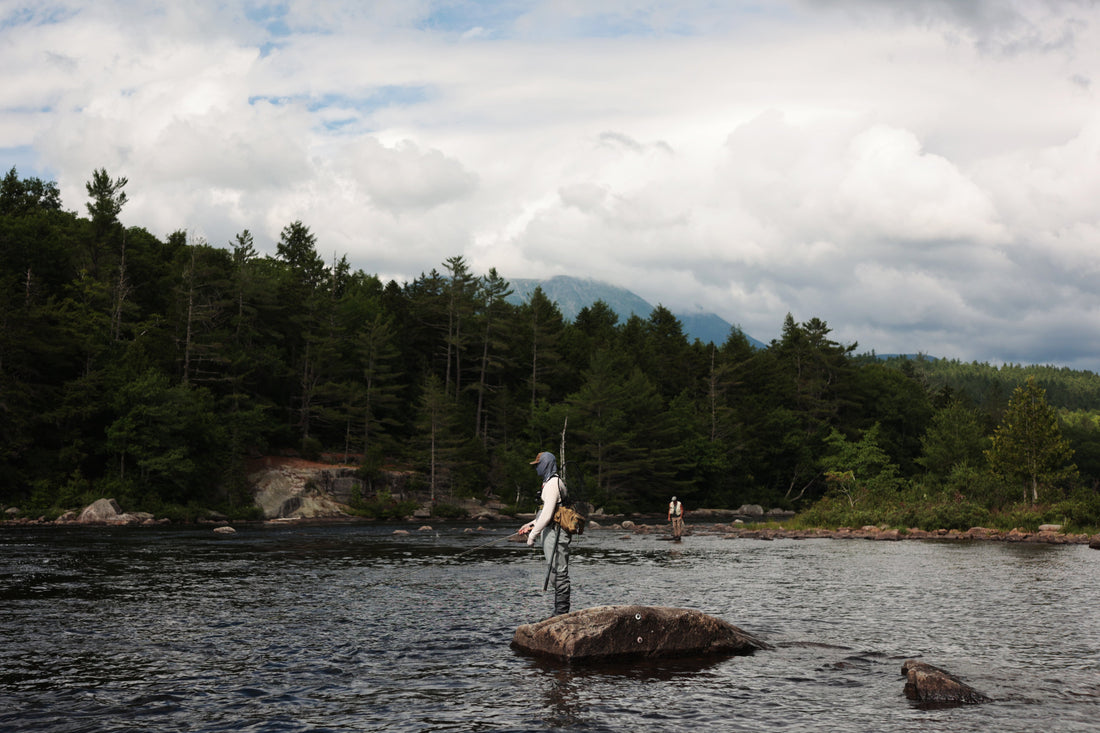
West Branch Penobscot - Maine
The West Branch of the Penobscot River, flowing from Ripogenus Dam near Millinocket south of the Baxter State Park region, offers a compelling mix of rugged scenery, multi-technique fly fishing, and premier native fish populations. Historically used for log drives and later to power the paper mill in Millinocket, the river now provides a year round habitat where anglers visiting Maine or Baxter State Park can fish for landlocked Atlantic salmon and native brook trout.
Anglers frequently fish the stretch immediately downstream from Ripogenus Dam, particularly through Ripogenus Gorge and the turbulent yet productive riffles and deep pools below ﹣ this section is widely considered the finest landlocked salmon river in the continental United States. The cold, oxygen-rich tailwater creates consistent hatches of mayflies, stoneflies, and caddis, running from spring into October, and feeds both native brook trout and trophy salmon.

The West Branch benefits from year-round flow control via Ripogenus Dam releases, maintaining near-constant summer and winter conditions that support a thriving cold-water fishery. Anglers pursue rising fish on mayfly and caddis dry flies in early summer, and swing streamers or nymphs for aggressive salmon in the spring and fall seasons. While the easiest fishing is done from floats or drift boats in the multiple plunge pools and large eddies, wading anglers can stalk some of the most rewarding technical challenges in the gorge’s pocket water, riffles, and deep runs.
Regulations reflect the fishery’s high value: from Ripogenus Dam downstream to the Telos Road Bridge, it’s fly-fishing-only from April 1 to September 30, with a bag limit of one landlocked salmon (min. 26″), and all fish must be caught on artificial lures or flies.
Conservation and management efforts focus on habitat protection, flow regulation, and fish passage. Ripogenus Dam’s regulated releases help maintain cold-water refuge, supporting healthy salmon and trout populations ﹣ while downstream restoration and invasive monitoring efforts aim to sustain this iconic fishery for future generations.
Our experience on this river informs an opinion that it's the finest salmon fishery in the state, where number of salmon caught is concerned. But that doesn't mean that trophy salmon aren't waiting for you in the deep plunges of this far flung river system.




